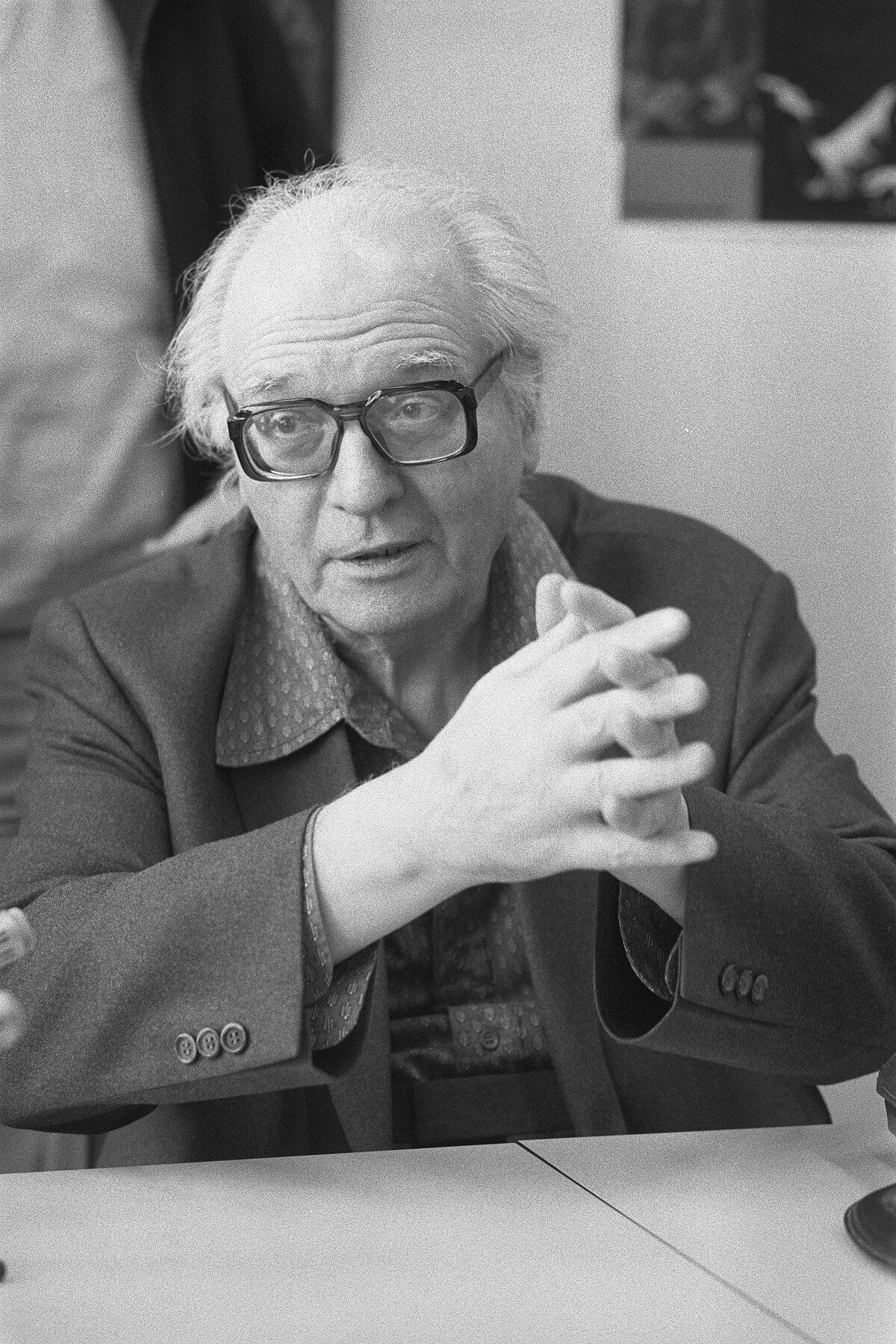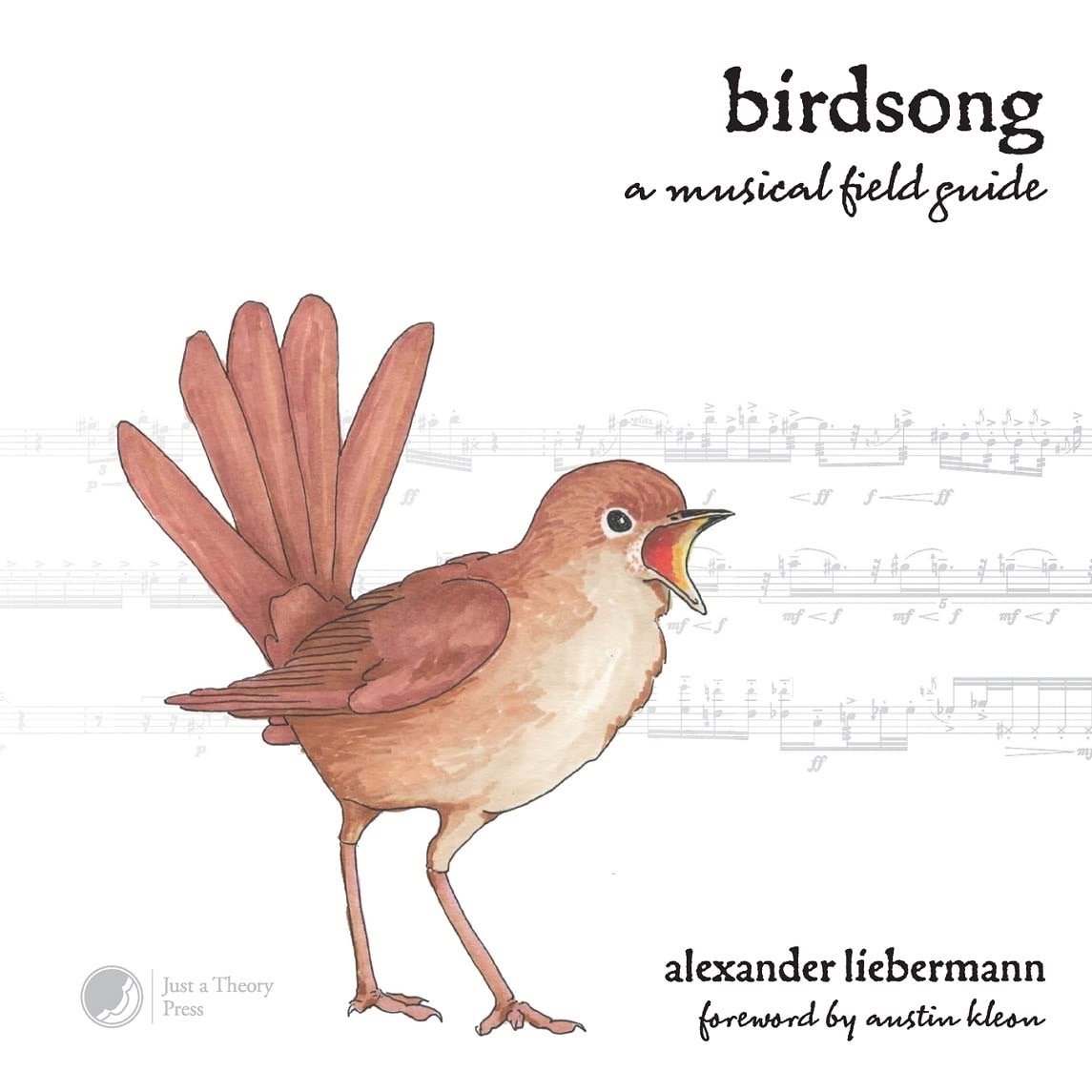Alexander Liebermann: Music is my primary means of self-expression
Interview with a composer Alexander Liebermann
Verzija intervjua sa kompozitorom Aleksandrom Libermanom na srpskom jeziku nalazi se na ovom linku.
Alexander Liebermann, composer
Photo: alexanderliebermann.com
I first discovered Alexander Liebermann in 2022, thanks to The Best Classical Music Podcast. What immediately caught my attention about this incredible artist was his passion for animal songs, particularly bird songs. I vividly remember listening to him speak about music, his transcriptions, and the challenges he faces while transcribing, all during a bus ride between my hometown and the city where I live.
As a nature enthusiast, especially fond of birdsong—a love I inherited from another bird admirer, Messiaen—I was inspired to delve deeper into Liebermann’s music. I started exploring his work on YouTube and following him on social media. Nearly every week, he would share a transcription accompanied by an explanation of the unique melodies birds produce, and I’ve been captivated ever since.
When I launched my blog a few months ago, I knew I had to interview this extraordinary artist. I felt a strong desire to introduce his work to my friends and colleagues in Serbia. And so, here it is—my small contribution to spreading the word about the remarkable Alexander Liebermann.
It is known that you began transcribing bird songs during the COVID-19 pandemic. Recordings sparked your curiosity about animals and the sounds they produce. What challenges do you encounter when transcribing animal songs, and what fascinates you to continue exploring this field?
That's right. After spending a week in the Costa Rican nature, the Pandemic hit, and I found myself back in my childhood room in Berlin. Suddenly, I realized what incredible things I had witnessed (and more importantly, heard!) in that nature. That’s when I began to google the birds I had seen and to transcribe their songs.
What fascinates me about animal songs—particularly those of birds—is their astonishing complexity. When you attempt to transcribe their vocalizations into musical notation, you realize how intricate and complex they are. You are essentially listening to the culmination of millions of years of evolutionary refinement, and that’s both humbling and awe-inspiring.
Music is my primary means of self-expression
〰️
Music is my primary means of self-expression 〰️
You often mention that the musical notation we use for composing has many limitations when it comes to transcribing animal songs. What have you discovered during your transcription work that is specific to animal songs yet difficult or nearly impossible to represent in classical notation?
Of course, our current system of musical notation has its limitations. The Western system is remarkably precise and continues to evolve with each new generation of composers (Think about George Crumb's notation of the 'seagull effect'), but it may never fully capture the complexities of all birdsongs.
Nightingales, for example, are extremely challenging to transcribe. Their vocalizations have clear-pitched whistles, various non-pitched sounds, and lots of very clear overtones (and all of that happening outside the framework of our 12-tone system). This makes an accurate transcription nearly impossible to do.
Evoking Olivier Messiaen
Olivier Messiaen: Composer of Sound and Color
Olivier Messiaen is perhaps the most famous composer for his journeys to tropical forests to listen to and transcribe the songs of various exotic birds. There is a wonderful documentary about him and his work called The Crystal Liturgy. Could you share what is unique about Messiaen’s transcriptions of bird songs? How does your approach differ from his, or are there similarities?
Messiaen is one of my favorite composers. I’m bummed because I was only three years old when he passed, and a part of me still feels there could have been a chance for me to meet him. I love his music, and I've spent time studying his transcriptions of birdsong, comparing them to those created by others, such as Hollis Taylor.
One thing that really struck me is the difference between how a composer transcribes birdsong versus how a musicologist/zoomusicologist approaches it. Messiaen, for example, seems to have transcribed through the lens of a composer, listening to the birds musically and imagining how their songs could be performed or integrated into his work. While that perspective is perhaps inevitable for composers, I try to approach transcription a bit differently by notating every single detail I can hear—and thus not worrying about whether it’s performable or not. Of course, having tools and software that allow me to slow down recordings has been a great help.
Messiaen believed that humans learned to sing and make music from birds. Does this idea make sense to you? Do you think nature has awakened humanity’s interest in music?
All I can say to that is that the etymology of the word composing comes from the Latin word ‘componere’, meaning "to put together." At its core, I believe everything is imitation. And through imitation, we develop and evolve.
Our species first appeared around 200,000 years ago, and some of the oldest known instruments are more than 35,000-year-old (like the five-finger flute made of bone discovered in what is now Germany). In the grand timeline of nature, this is but the blink of an eye ago. The sounds of birds and other animals from back then were likely quite similar, and certainly more abundant. Now imagine hearing a cuckoo—wouldn't you feel compelled to imitate it? I still respond to owls, imitating them whenever I hear them on summer nights. So, yes, it makes perfect sense that, in the beginning, we imitated the sounds (pitches and rhythms) that nature offered us.
Quaraçá for Wind Quintet is inspired by the song of the Uirapuru, a South American bird native to the Amazon rainforest.
The Birds’ Hidden Language
What have you learned or discovered so far about animal songs? What secrets do they hold? Are there any similarities between their music-making and human music?
I am still quite new to this field, but I have learned a great deal through reading and collaborating with scientists (primarily biologists and ornithologists). Books like The Bird Way by Jennifer Ackerman and Nightingales in Berlin by David Rothenberg have taught me not only about birds but also about the parallels with human music-making. Did you know that zebra finches learn their songs by memorizing and practicing? And male nightingales produce a specific sound that females find “sexy.”
In my work transcribing birdsong, I’ve discovered that the possibilities of pitch and rhythmic combinations are virtually infinite. In the songs of nightingales, I’ve encountered jazz-like licks and pitch sequences reminiscent of famous musical themes. On the other hand, blackbirds and Blyth’s reed warblers sing almost perfect triads and seventh chords. It’s truly amazing when you think about it.
What fascinates me about animal songs—particularly those of birds—is their astonishing complexity.
Your body of work includes a significant number of compositions. Listening to them and trying to identify your unique musical expression, I noticed that your music often feels picturesque, descriptive, and inspired by representations of the world and nature. How do you overcome the limitations of instruments in your compositions when trying to imitate the natural phenomena that inspire you?
That’s a great question, and it’s something I’m still grappling with. I tend to be a bit conservative when it comes to orchestration and melody. However, the sounds created by birds (and other animals) can be so ethereal that they demand new instruments and a completely different approach to orchestration. It’s a real struggle for me because I want to be able to imitate or recreate these sounds using a more traditional orchestra.
In a recent piece I composed, I implemented the call of a red-tailed hawk into the orchestral texture. The call sounds like white noise, but I think I managed to imitate it quite well using the traditional orchestra. Keep it between us, but it involved high string harmonics in a dense cluster, along with an incredibly high piccolo flute.
Music and nature
Liebermann’s compositional oeuvre spans dozens of works for various instruments and ensembles. From solo music and choral pieces to chamber and orchestral works, his versatility as a composer is remarkable. Notably, he also composed music for the film Frozen Corpses Golden Treasures.
A defining feature of Liebermann’s music is his integration of bird songs into many of his compositions. However, his work extends beyond this, as he is deeply committed to exploring the connection between music and science. A standout example is a piece that emerged from his collaboration with biologist Professor C. Loren Buck from Northern Arizona University. Together, they aimed to musically represent the annual cycle of Arctic ground squirrels—extraordinary creatures that hibernate for over half a year with body temperatures dropping below freezing. Through this composition, they sought to capture the essence of the squirrels’ existence while drawing attention to the growing threats these animals face due to global climate change.
I believe that making music an interdisciplinary field is crucial for the 21st century.
You are of French and German origin, yet you have been living and working in the United States for quite some. Could you describe how American musical traditions have influenced your compositional style compared to European traditions? Are there distinctions, and how do they relate to your work?
I studied at the Music University “Hanns Eisler” in Berlin, majoring in music theory and jazz composition. While I aspired to write “serious” music like the composers in the contemporary composition division, I didn’t want to follow the experimental and "Neue Musik" style that dominated the scene. Feeling out of place, I decided to leave for the US to study with Samuel Adler and Steven Stucky at Juilliard. There, I noticed that the musical language of all the students was eclectic (in the good sense of the word!), and that was truly refreshing to me.
In Germany, I felt that writing melodies was not considered a serious way of composing. While that may not be the case anymore, at the time it certainly felt that way. Melodies are important to me, and they are never entirely absent from my compositions. I often reference Messiaen’s words on this subject. In 1944, he wrote about his own musical aesthetic:
“With the awareness that music is a language, we will first strive to let the melody ‘speak.’ The melody is the starting point. It must remain sovereign! […].”
That said, I also have a deep appreciation for atmospheric and ambient music, and in recent years I’m finding myself more and more drawn to experimental music. Let’s see where this takes me.
Melody and noise
What does music, and your compositions in particular, mean to you considering the inspirations that drive your creative process?
Music is my primary means of self-expression. However, as a naturally curious person, I also use it as a tool to explore various subjects. While I certainly write pieces inspired by birds, I’ve also composed about topics such as climate change, history, and other animals like arctic ground squirrels. For the latter, I collaborated with scientist C. Loren Buck, using his data to shape the form of the piece. I believe that making music an interdisciplinary field is crucial for the 21st century—it can not only reach a broader audience that way but also serve as an effective educational tool.
Considering that music can be “captured” from everything around us, how can we distinguish between melody and noise?
Ha-ha! That’s a tricky question. First, melody is not the opposite of noise. A "melody" (and define melody) could be considered "noise" by some. And then, what exactly is music? I’ve spent a lot of time reflecting on this over the years, and the truth is, there’s no single, universally accepted definition. (For fun, try looking up the definition of music in different countries!)
However, there are two definitions that resonate with me. The first is a more philosophical and pragmatic definition by Andrew Kania:
“Music is (1) any event intentionally produced or organized (2) to be heard, and (3) either (a) to have some basic musical feature, such as pitch or rhythm, or (b) to be listened to for such features.”
And then there is the more “romantic” one, as given by David Rothenberg:
“Before music, sound is sound. After music, sound is still sound, but our feet are walking a few inches above the ground.”
Ultimately, I believe it’s up to the listener to decide what qualifies as music, and therefore to distinguish between melody and noise. To me, both melody and noise are integral parts of what music is.
Birdsong: A Musical Field Guide
Another fascinating aspect of Liebermann’s work is his book Birdsong: A Musical Field Guide.
This book is a treasure for both musicians and nature enthusiasts, featuring highly accurate transcriptions of birdsong. It includes beautiful illustrations of each bird species, created by artist Anna Schiller, along with QR codes that link directly to the original videos. This allows readers to listen to each bird’s song while following the music, creating an immersive and educational experience.
Erwin Schulhoff – A Composer of Many Faces
Your doctoral dissertation focuses on the Austro-Czech composer and pianist Erwin Schulhoff. What drew you to research Erwin Schulhoff, and what unique aspects have you discovered in his compositions?
Erwin Schulhoff, composer
He was passionate about all kinds of music, exploring Post-Romanticism, Dadaism, French and German Expressionism, and even jazz!
I absolutely love Schulhoff’s music. Not only is the music from his string sextet one of my earliest musical memories, but I also feel a deep connection to him. Let me explain. First, Schulhoff was German-Czech and grew up with the internal dichotomy of not quite knowing where he belonged. This is something I can relate, with my own French-German roots.
Secondly, Schulhoff lived during a time when genres and musical styles were exploding. He was passionate about all kinds of music, exploring Post-Romanticism, Dadaism, French and German Expressionism, and even jazz! It must have been overwhelming to live through such a transformative time. Schulhoff embraced many of these styles and eventually succeeded in creating his own unique musical language by assimilating elements from the ones he liked most.
Today, we face a similar situation. We are surrounded by so much music, and we can listen to everything, everywhere, all at once. I love Debussy and Ravel, but I also have a passion for J.J. Cale and even AC/DC. The list is endless. So why wouldn’t I incorporate uplifting beats into my music, or a power chord here and there? I’m still working through this, but Schulhoff is a huge influence and inspiration in that regard. That’s why I wrote my doctoral thesis on his music.
Which part of his oeuvre do you consider the most innovative, and why?
To be honest, I don’t know if his work is that innovative, and that’s perfectly okay. What matters most is that whatever he wrote, he wrote well—really well! It is good music and I listen to it frequently. What more could a composer wish for than to have the next generation of musicians and composers listen to and be inspired by their work?
That said, if there is one piece that is truly groundbreaking, it is probably the Five Pittoresques from 1919. It is one of the first classical compositions to incorporate jazz elements throughout (with only Stravinsky’s Piano Rag beating Schulhoff by a couple of months). Additionally, the piece features a movement made entirely of silence, and that 33 years before John Cage’s 4'33!
Please check out his music. For starters, I recommend the Hot sonata, the String Sextet, and his Five Pieces for String Quartet.
Alexander Liebermann, in a few words
Alexander Liebermann is a German-French composer of classical music, whose acclaimed works are characterized by an eclectic blend of diverse topics such as philosophy, biology, astronomy, and other fields. Among his most recent commissions are a climate-change-reflecting monodrama written for the Deutsche Oper Berlin, a birdsong-inspired wind quintet for the Brazilian Winds Ensemble, and a soundtrack for the documentary film Frozen Corpses Golden Treasures.
As a passionate nature enthusiast, Liebermann spends much of his time studying the sounds of wildlife. He is known for his original and accurate transcriptions of animal vocalizations, which have gone viral on social media and been featured in the world-renowned magazine National Geographic. These transcriptions have also earned him invitations to international congresses in Colombia and Brazil, as well as a feature on CBS Sunday Morning. Liebermann is the author of Birdsong: A Musical Field Guide, a book that offers a unique perspective on the musicality of birds and their relationship to human music-making.
Liebermann holds degrees from the Hanns Eisler Music Conservatory, the Juilliard School, and Manhattan School of Music. For his thesis on Erwin Schulhoff, Liebermann was awarded the Saul Braverman Award in Music Theory. Liebermann currently resides in New York and serves as a faculty member for music theory and ear training at Juilliard’s preparatory division Music Advancement Program.



